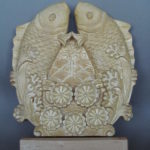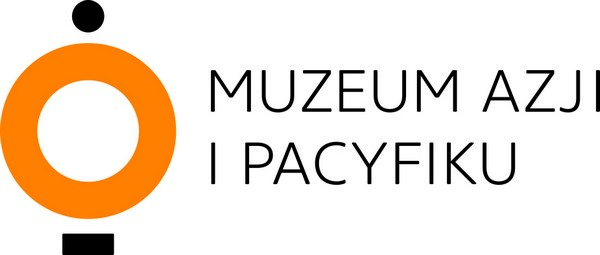Sculpture – Two Fishes and a Cross
South Korea, 2nd half of the 20th century
carved wood; height: 23 cm
Inv. number MAP 21648
Gift from Maciej Góralski, 2018
The fish is one of many ancient symbols known to many cultures, and usually symbolizes life and numerous offspring. Such was its meaning for the ancient Assyrians, Syrians and, to some extent, the Egyptians, for whom it was also a symbol of health and happiness. In Indian beliefs, the great fish (Sanskrit: matsya), which saved mankind from destruction during the flood, was the first incarnation (avatar) of the god Vishnu. In China, a particular species of fish – the carp – is, in turn, a symbol of perseverance and success in state examinations. For the Japanese it also stands for perseverance and is a symbol of samurai and courage.
In Buddhist symbolism, a pair of gold fish with their heads facing downwards means abundance and release from earthly worries. It belongs to the Eight Buddhist Auspicious Symbols, placed on altars instead of actual offerings and is considered to bring good fortune. In Christianity, the fish is a symbol of Jesus Christ and of the Eucharist, which reminds us of gospel of Multiplication of the Loaves and Fish.
Christianity has spread in the Far East since the period of Great Geographical Discoveries (although it was known also before in the form of Nestorianism) and in our times it attracts more and more believers in China, Vietnam, South Korea and Japan. The largest proportion of Christians can be found in South Korea, where together with Buddhist-Christian syncretic cults they constitute at least thirty percent of the population.
The sculpture showing the pair of fish expresses both Christian symbolism – accented by the presence of the cross – and Buddhist one. It reminds us of gospel of Multiplication of the Loaves and Fish, and it is a Christian or syncretic cult object. Such sculptures might serve as an element of decoration of a shrine or chapel. Christian- and syncretic Buddhist-Christian cult chapels – are established in many different places, including in shopping centers.
The sculpture can be viewed in the Museum hall until 31st December 2018.
English proofreading: Steven Jones

![grafika z tekstem [journeys to the east]](https://www.muzeumazji.pl/maip/uploads/2022/08/baner_strona_english_tn-1140x220.jpg)



